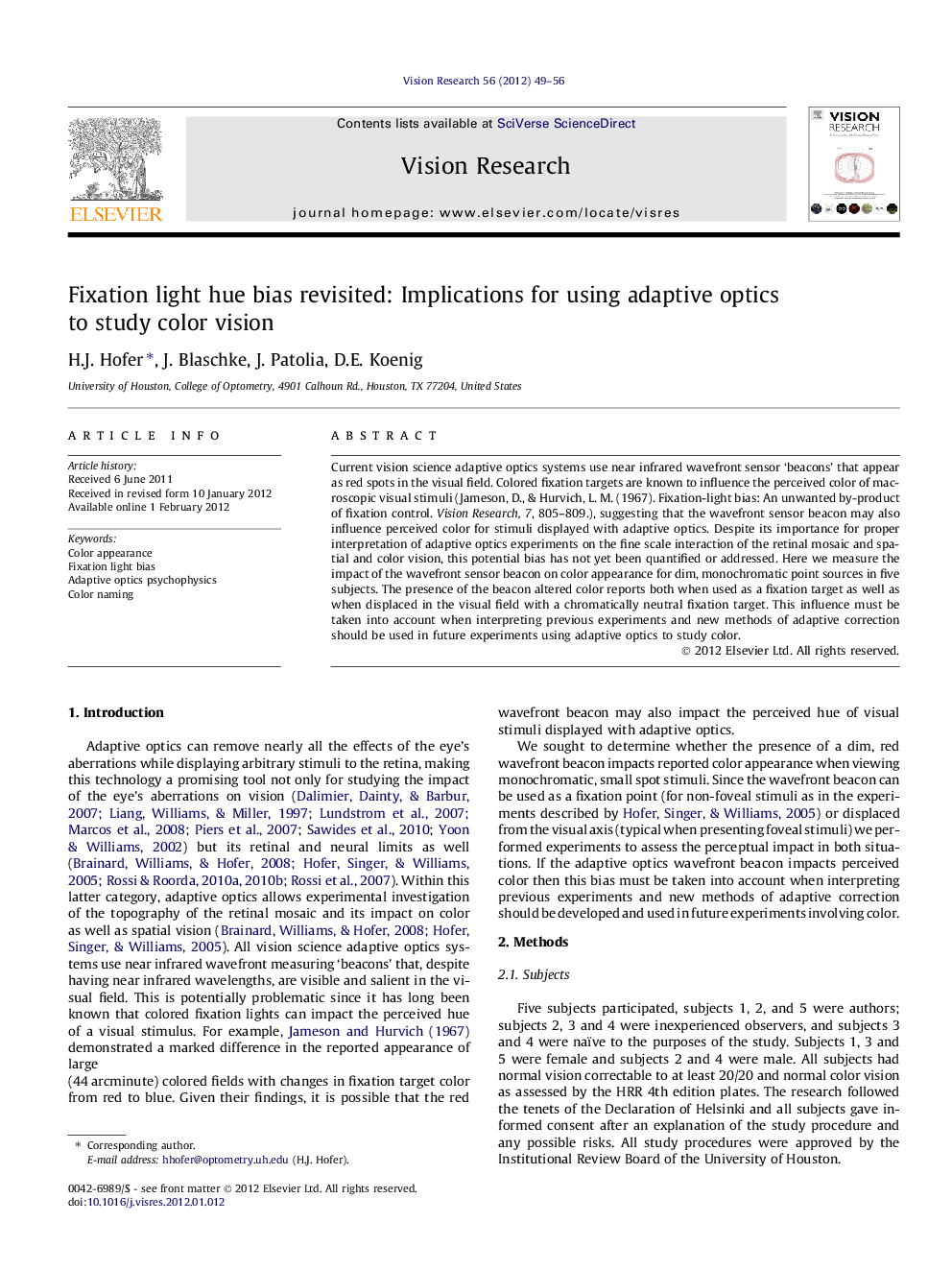| کد مقاله | کد نشریه | سال انتشار | مقاله انگلیسی | نسخه تمام متن |
|---|---|---|---|---|
| 4034056 | 1603238 | 2012 | 8 صفحه PDF | دانلود رایگان |

Current vision science adaptive optics systems use near infrared wavefront sensor ‘beacons’ that appear as red spots in the visual field. Colored fixation targets are known to influence the perceived color of macroscopic visual stimuli (Jameson, D., & Hurvich, L. M. (1967). Fixation-light bias: An unwanted by-product of fixation control. Vision Research, 7, 805–809.), suggesting that the wavefront sensor beacon may also influence perceived color for stimuli displayed with adaptive optics. Despite its importance for proper interpretation of adaptive optics experiments on the fine scale interaction of the retinal mosaic and spatial and color vision, this potential bias has not yet been quantified or addressed. Here we measure the impact of the wavefront sensor beacon on color appearance for dim, monochromatic point sources in five subjects. The presence of the beacon altered color reports both when used as a fixation target as well as when displaced in the visual field with a chromatically neutral fixation target. This influence must be taken into account when interpreting previous experiments and new methods of adaptive correction should be used in future experiments using adaptive optics to study color.
► Adaptive optics wavefront correcting beacons alter stimulus color reports.
► The nature of the impact depends on whether or not subjects fixate the beacon.
► Valid color appearance measures require adaptive optics without a visible beacon.
Journal: Vision Research - Volume 56, 1 March 2012, Pages 49–56